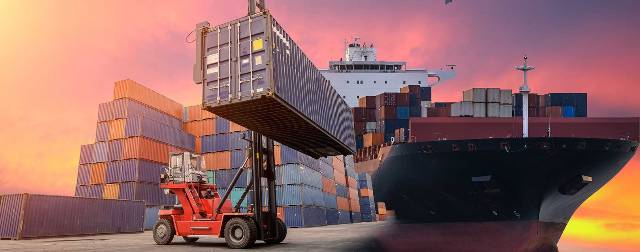by Ashish Agarwal, Director & CEO, Seros Logistics
Logistics is considered the backbone of the economy, and the true importance of the sector was realized during the pandemic-induced lockdowns. Even so, it’s not as seamless as it should be. There are numerous bottlenecks - from infrastructural issues to inventory management and coordination. The Indian logistics market, currently valued at $215 billion, is expected to grow at a CAGR of 10.5%. However, the organized players amount to just 10-15% in the industry.
Due to a lack of streamlined processes, goods/cargos take much longer to reach their destinations. In a country like India, where end-to-end delivery is a massive task, switching to a multimodal model is the only effective solution. Let’s delve deeper into why and how multimodality is best suited for hassle-free logistics operations, especially in India.
Cost-effective & efficient
Indian Railway’s strategic move to containerize the cargo transport put the country on the multimodal map in 1966. It gave birth to intermodal freight transport, a cheaper option for all cargo movement over medium and long distances. In 1981, the first ISO container was moved inland to India’s first ICD at Bengaluru by the Indian Railways. After which, the network grew, providing multimodal transport infrastructure. In 1993, the Indian Parliament passed the Multimodal Transportation of Goods Act that regulated the multimodal transportation of goods via a single contract. A boost to inland transport paved the way for multimodal transport operators (MTO) to register themselves as the operations.
With only one MTO to liaise with, multimodality ensured an efficient and cost-effective door-to-door movement of goods. While some MTOs own their fleet of vehicles, some strike relatively cheaper deals with subcontractors, leading the client to save money.
Offers flexibility
Indian logistics has witnessed several changes over the years and is striving to become more organized. To sustain, the companies must monitor their current working methods and evolve as per the changing ecosystem, digitization, and value creation. Leading logistics players in the sector are offering multimodal solutions by combining all the three modes of transport - air, sea, and road/rail. Depending on the start and endpoints, the clients can choose to balance while being cost-efficient. The organizations provide the clients with flexible and intelligent logistics solutions while keeping the consumers’ tactical distractions at bay. To increase flexibility and reduce logistics costs, the government is promoting multi-modal transport inland and coastal shipping.
The recently launched PM Gati Shakti Masterplan aims to revolutionize the multimodal infrastructure in the country by incorporating other initiatives, including, Bharatmala, Sagarmala, and UDAN, among others. Consequently, developers and investors are committed to providing multimodality to maximize connectivity further. Better connectivity then helps develop customized solutions to avoid any foreseen bottlenecks in the supply chain.
Reduces cargo loss/damage
From defective packaging to inaccurate loading/unloading, cargo damage and loss can happen at any level of the supply chain. Opting for a multimodal solution implies that the cargo will be on the sea route for the maximum time of its transit. It is well-sealed, better protected, and safely stored than a trailer at a congested highway. As minimal human handling of the cargo is involved, the risk of contamination, theft, and cargo loss is minimal.
Reduces carbon emissions when appropriately planned
The global supply chain accounts for 80% of the world’s carbon emissions, with India being the third-largest contributor to carbon emissions at the country level. The supply chains will need at least $100 trillion in investment to achieve the goal of net-zero emissions over the next three decades. Therefore, companies are becoming conscious and indulging in eco-friendly initiatives to lower their carbon footprints.
Even with poor road management and a lack of effective logistics solutions (that imposes additional costs and affects service reliability), over 50% of freight movement in India is by road. This inadequate multimodal transport development results in higher amounts of carbon emissions. Therefore, switching to multimodal with more EVs and CNG/LNG trucks and maritime will reduce the logistical cost and time of the movement, besides lowering the carbon footprint. Consistent efforts like proposing the Merchant Shipping Bill and reducing service tax on coastal shipping and green channel clearance for coastal cargo will further help achieve the motive.
Conclusion
Multimodal transportation is an evolving solution, with roads, by far, being the most common one. Since air freight is expensive, the government actively promotes policies supporting inland waterways. As mentioned, there can be several reasons why a bottleneck may develop in logistics, and the effects can all be negative. Multimodal ensures supply chains’ resilience and enable India to be one of the most lucrative markets in the coming years.






